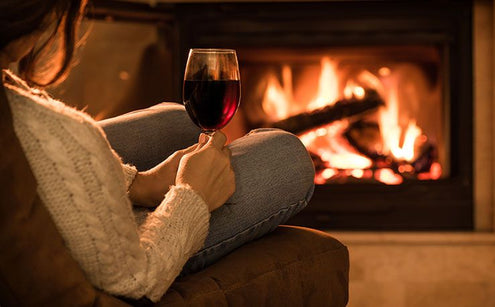When it comes to wine and wine etiquette there are two types of people. Those who care about the proper marrying of wine to their glasses, and those who are happy to drink their wine from just about anything. But what's the reason for all this fuss? You may be surprised to learn there is a lot more to it than you might think!
We know that wine glasses, just like wine itself, come in many variations – from elegant flutes, U-shaped Chardonnay glasses, to the very round bowled Bordeaux glasses to name a few. But we are here to let you know it’s not all for show and that there is, in fact, method in the madness! These glasses were actually made this way to enhance the way you enjoy your wine.
Firstly, the size and shape of the glass is really important. A general rule of thumb – the bigger the bowl, the greater the ability for the wine to open up and allow the aromas to circulate optimally, especially if you are drinking red wine.
The stem plays an important role too! Not only an elegant feature of the glass, functionally it allows the drinker to hold their wine comfortably without altering the wine's temperature. If you want to observe your wine's colour, swirling is also easier with a stemmed glass – plus, it looks super cool and sophisticated among friends!
With the basics of every wine glass covered, let's take a closer look into some of the different kinds of wine glasses that exist and what makes them so unique.

The Flute
A good way to remember the first glass we’ll talk about is “Flutes for Fizz!” The champagne flute is probably one of the most iconic wine glasses there is because who doesn’t love a bit of bubbly? Sparkling wines always taste so good because by reducing the surface area of the wine, fizzy wines retain their bubbles for longer.

The Burgundy
The Burgundy wine glass is not only arguably one of the coolest-looking wine glasses you'll find, but it’s also great if you enjoy lighter, more delicate red wines. The design of its large and broad bowl directs the wine to the tip of the drinker's tongue, allowing you to fully taste all those flavour combinations such as the hints of ripe fruit and sharpness that light-bodied reds are so famous for.

Bordeaux
A Bordeaux glass is not so dissimilar to a Burgundy glass, and you would be forgiven for misidentifying their similarities. Out of all the red wine glass varieties, this one sits the tallest, broad-bowled but narrower than other red wine glasses. These unique characteristics allow for more oxygen to soften tannins, responsible for the bitter characteristics of red wine. As such, this glass is perfect for full-bodied wines with higher tannins.

Chardonnay Wine Glass
A chardonnay wine glass can be recognised by its large opening. Perfect for a full-bodied white wine, this design helps guide the wine to the tips and sides of the tongue to enable the palate to taste the wine’s sweetness. The bowl provides the right amount of aeration to concentrate the wine's aromas while the large opening is responsible for balancing out sweetness and acidity.
Hopefully, we have given you enough insight to go off and investigate the glasses in the kitchen and put these tips to the test, and wow your friends with your new level of sophistication!
A good tip if you want to avoid the headache after your exploration? Edenvale alcohol removed wines of course!




